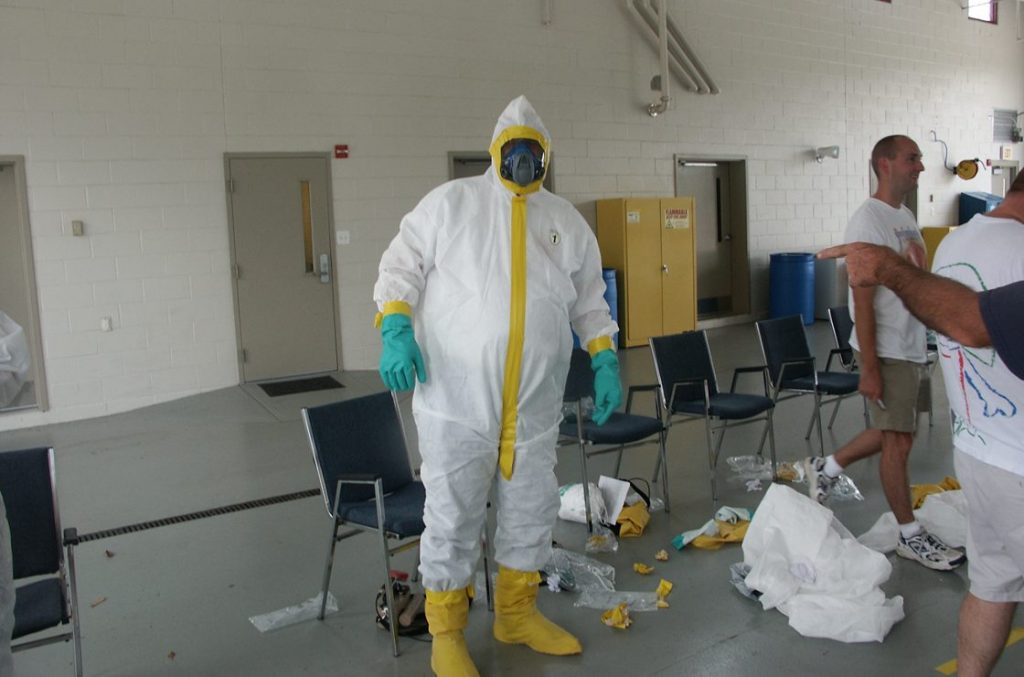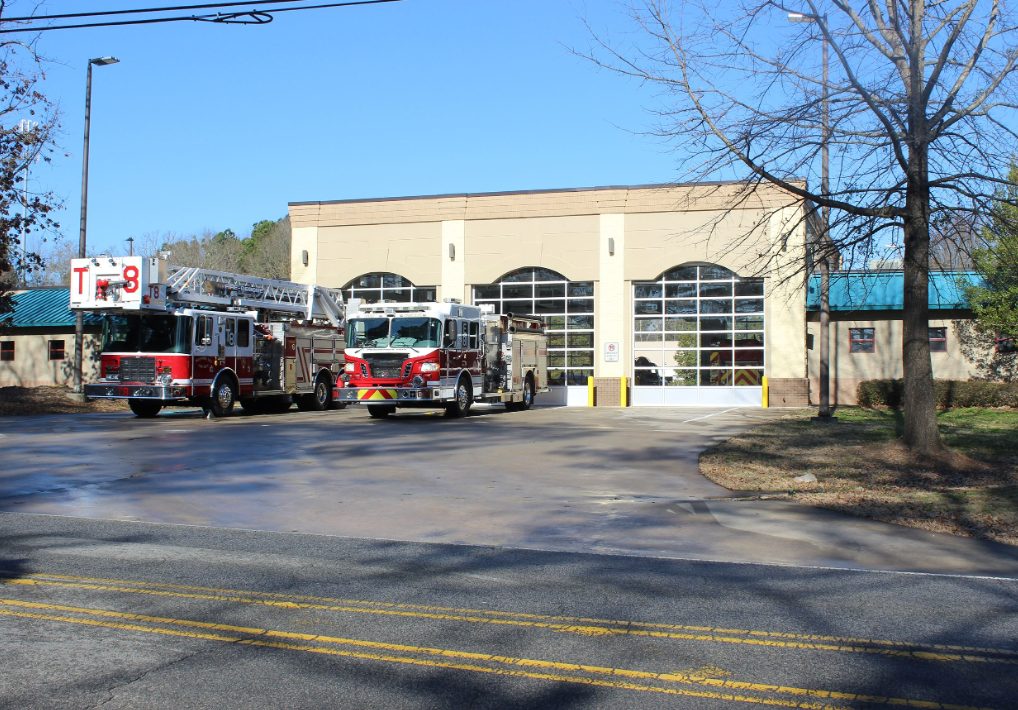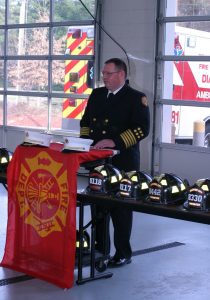Fort Lewis, WA was my next assignment after returning from Vietnam in 1973. It was at Fort Lewis that preparation for a second career began. I joined the local Fire Department (Thurston County District #3 (Lacey)) as a volunteer and became a certified Firefighter and Emergency Medical Technician. I started a Paramedic class in Pierce County but was dismissed when they excluded everyone who did not reside in Pierce County. When next assigned to complete the MP Officer Advanced course at Fort McClellan AL, I enrolled in the Paramedic course at the University of Alabama at Birmingham. This involved driving to Birmingham on Tuesday and Thursday evenings and living in my van on weekends when completing the hospital clinicals at various hospitals there. I had joined the Anniston Rescue Squad, was licensed as an Alabama Paramedic in 1978 and was the first Paramedic in the Rescue Squad. There, I saw more blood and guts than in the Republic of Vietnam. Disputes involving knives and shootings were a frequent occurrence.
Next selected for a graduate Fellowship in Forensic Medicine at the Armed Forces Institute of Pathology, I also completed a master of Forensic Science degree at George Washington University. Then assigned to the 172nd Infantry Brigade in Fort Richardson Alaska, I volunteered with the Palmer Fire Department for about two years years. Later, in response to a request for an overseas assignment, I was stationed at the Army Training Center at Fort Irwin CA for four years as the Provost Marshal, and later as an Engineer Officer in J3, Force Modernization, US Forces Command located at Ft. McPherson in Georgia. After arriving in Georgia in1989, my family and I settled down in Peachtree City and I joined the Peachtree City Fire Department as a volunteer firefighter/Emergency Medical Technician. Since Georgia did not have reciprocity for Paramedics with Alabama, I took the Paramedic course again to be a Georgia-certified Paramedic. For two years, I served in a Volunteer capacity as a FireMedic. I retired from the Army in 1992 as the O-6 board was convening. Regardless of the outcome of promotion, it seemed apparent that I would finally be sent overseas, and I was determined not to disrupt the education of our two sons who were close to graduation as had happened to our eldest son. I decided that if I was going to continue in emergency service, I might as well get paid something. So, I became a career FireMedic with Peachtree City Fire Department working 24 hours on and 48 hours off. I responded to virtually every kind of known emergency: significant residential structure fires, industrial fires, numerous vehicle accidents and fires, aircraft crashes, flood rescue, and various accidents and injuries. In the early days we responded to calls of “general weakness”, which often turned out to be a patient in respiratory and/or cardiac arrest.
A couple of the more memorable calls included a small boy (3 ½ years) who had fallen and struck his head on the brick fireplace. That had created an obvious bruise and a laceration which was freely bleeding. The boy was near hysterical and no one had been able to calm him. When I walked into the room, the boy saw me, came running over to me and jumped into my arms. We stopped the bleeding, applied a temporary bandage and transported him to the hospital where they could close the wound. No one knew why I had such an impact on the child; perhaps it was because I had ten grandchildren of my own.
Another case involved a multiple vehicle wreck with multiple victims and a vehicle fully involved in fire. As we were working to extinguish the fire, we noticed a man slumped over in the front seat. Shortly thereafter, we noticed that he was still alive and pushed the fire away from him as we proceeded with extrication attempts. This was complicated by the fact that the boot on his right foot was melted into the base of the floor shifting mechanism. He had survived the fire because he was wearing heavy hunting clothing which shielded him. He was airlifted to the burn center where he lived for about three weeks before succumbing to respiratory distress.
The next incident involved a man who was operating a Bobcat loader on which one of the side safety screens was missing. He managed to get his head outside the cab while the hydraulic arms were in motion and they sheared off the top half of his head. He was still breathing so he was intubated and transported to the nearest hospital where the physician on duty observed his condition and immediately determined that further medical treatment was futile.
In 1997, I was designated as the department Accreditation Manager and began working on the many issues needed to improve the Insurance Service Office (ISO) rating which effects the insurance rates for property within the city and achieve National Accreditation. In December 1999, the current Fire Chief died after a battle with cancer. In January 2000, I became the third Fire Chief of the Peachtree City Fire Department. I continued in office until my retirement in April 2007 and remain the only retired Fire Chief of Peachtree City.
Like many Fire Departments, it had started as an entirely volunteer organization with minimal equipment, minimal training and minimal funding. Some members had mortgaged their homes to get money to buy the first fire engine, a 1949 Chevy 750 gallon per minute (GPM) pumper. The city grew and was continuing to grow, and the Fire Department had not grown with it. Since I had been the first person in the Department to attend the National Fire Academy, I immediately started increasing training opportunities and acquiring more modern and capable apparatus and equipment.

Morale increased, and both fire and medical service provided was excellent. In response to a request for help to recover from Hurricane Katrina, The Peachtree City Fire Department sent an ambulance with Medics and provisions to Louisiana for about one month. During my term as Peachtree City Fire Chief, no firefighter was killed or incurred significant injury in the line of duty. No fire apparatus broke down while fighting a fire and no ambulance broke down while transporting patients to a hospital.
On September 11, 2001, I was at a Mass Disaster Operations class. Just before the class started, we received a phone call urging us to turn on a TV set and watch the news. It was activated just in time to see the second aircraft strike the Twin Towers, and everyone knew instantly that it was not an accident. Within minutes, everyone’s pagers started activating calling them back immediately to their primary duty stations. I and the rest of the class returned to our duty stations to begin immediate checks of apparatus, equipment and staffing in preparation for whatever might next occur.
When we moved to Georgia, we were looking for quality schools for our sons, quality emergency services for a safe place to live, and some activities and amenities to keep our sons involved in wholesome activities. My 33 years in the fire service and 29 years as a Paramedic have clearly demonstrated that most persons have the same outlook. Also, that whenever most people need directions, information or help, they almost always call the fire department either first or when they cannot find someone else to help them. The quality of the fire/emergency medical service is definitely a major determinant in how the community’s quality of life is perceived and maintained.



Leave a Reply